In part one of this two-part series, we discussed the experience of the Social Anxiety sufferer. In part two, we examine how to treat this condition with Cognitive Behavioral Therapy (CBT), and how Social Anxiety relates to other Obsessive Compulsive Spectrum Disorders.
Treatment of Social Anxiety

Cognitive Behavioral Therapy (CBT).
The most effective form of treatment for Social Anxiety is the same as in other Obsessive Compulsive Spectrum Disorders – Cognitive Behavioral Therapy (CBT). This is because, like the other disorders in the spectrum, Social Anxiety involves an obsession and a series of compulsions which form a cycle.
The fundamental obsession in Social Anxiety is the fear of being evaluated negatively. This generally includes fears of being rejected, as well as the fear of being singled out for humiliation and traumatized by emotional abuse from others. The primary compulsion in Social Anxiety is the phobic avoidance of social situations in which one fears rejection and/or humiliation (thus its synonym, Social Phobia).
It is tempting to look at avoidance as the absence of engaging in social behavior. However, avoidance is an overt physical and mental behavior, the primary goal of which is to reduce or eliminate anxiety. For the individual with Social Anxiety, the act of choosing not to go to the party thus serves the same function as the act of choosing to wash one’s hands serves for the individual with OCD. Further, those with Social Anxiety who are able to commit to a social interaction may find themselves escaping mentally in the process by spending their energy focusing on things other than the present situation.
The compulsion of avoiding a social situation is read by the brain as evidence that the avoided situation is dangerous. This leads to the unwanted thoughts, feelings, or sensations being tagged with false information and presented as especially terrifying. This leads to more avoidance and around and around we go.
Cognitive Therapy for Social Anxiety
The Cognitive Therapy element of Cognitive Behavioral Therapy (CBT) works by first identifying distorted cognitions which promote the anxiety, and then modifying them with more realistic and objectively true statements.
Here are some examples of common distorted beliefs that influence individuals with Social Anxiety:
- “All people must like me. If one person does not like me, all people probably dislike me, and that would be catastrophic.”
- “I must behave in a certain way congruent with the environment. If I am not feeling humorous when funny people are nearby, I am doing something wrong.”
- “I should always have something to say and it should always be the right thing to say.”
- “The people who say they care about me would not do so if not obligated. People I work with are cordial with me because they have to be.”
- “If I allow a silence to become awkward, it is my responsibility to break it. I am solely responsible for the flow of a conversation, which must be smooth, rhythmic, and without tangents.”
- “It is unacceptable for me to sweat, blush, or indicate in any way that I am uncomfortable in a social situation.”
Common cognitive distortions we see promoting these beliefs include mind reading (assuming you know what others are thinking), catastrophizing (predicting negative future outcomes), personalization (believing that the behavior of others must have something to do with you) and should/must statements (unrealistic expectations of one’s own behavior). Working with a CBT therapist will mean learning how to pick out these distortions and re-write them both literally and internally.
Behavioral Therapy for Social Anxiety
The behavioral elements of CBT for Social Anxiety include Exposure and Response Prevention (ERP) and social skills training. ERP for social anxiety involves identifying the feared situations and re-creating them (exposure) while at the same time resisting the urge to avoid the discomfort by escaping the situation (response prevention).
In part one of this series, we discussed the two main sub-types of Social Anxiety – “presentation” anxiety and “connection” anxiety. When treating “presentation” anxiety, it is possible to re-create feared situations in a number of ways, such as participating in an open-mic poetry reading, attending a public speaking class, or speaking in group therapy sessions. For “connection” anxiety, exposure may involve calling old friends, starting up more personal conversations with co-workers, or interacting with strangers in daily life (security guards, barristas, mailmen, people in the elevator, etc.).
In part one of this series, we also discussed “The Cringe”, wherein the individual with Social Anxiety experiences a high degree of discomfort related to perceived social rejection. To specifically address the problem of avoiding the “The Cringe”, some exposures may involve intentionally creating rejection situations. This may mean voluntarily spilling a drink in a public place, asking a waiter for an item that does not exist on the menu, or starting random conversations with strangers. Repeated exposure to the feeling of “The Cringe” not only reduces the intensity of the feeling, but increases the brain’s capacity to integrate that experience as a normal event.
Social skills training typically involves learning about and improving eye contact (for the record, people look more at each others’ faces, not eyes), hand shaking and other social greetings, as well as techniques for developing and managing conversations.
Mindfulness for Social Anxiety
Another key element in Cognitive Behavioral Therapy (CBT) for the treatment of Social Anxiety is Mindfulness. As with other OC Spectrum Disorders, Social Anxiety is primarily a problem of inaccurately viewing thoughts, feelings, and sensations as intrinsically important events to which one must attend and respond. But there is a tremendous difference between having a thought that someone disapproves of you, and believing that this thought is a piece of objective evidence that you are disapproved of. Mindfulness training promotes the idea that one can observe thoughts, feelings, and sensation in social situations without weighing in on the value of those thoughts, feelings, and sensations. In other words, we can separate the word “fire” from the actual pulling of the fire alarm.
Social Anxiety in the Obsessive Compulsive Spectrum
While not all Social Anxiety sufferers have Obsessive Compulsive Disorder (OCD), it is a common co-morbid diagnosis. Typical OCD behaviors one might experience in relation to social anxiety include mental checking or retracing. In this mental ritual, the sufferer replays events and conversations multiple times in an attempt to gain certainty that they did not commit some sort of social error that they find unacceptable.
There are some situations in which socially avoidant behaviors can actually be better explained by OCD, such as when a person avoids going to a party because being in a room full of people increases the likelihood that they may come in contact with some feared contaminant. In primarily obsessional forms of OCD (aka “Pure O”), a sufferer may avoid social situations for fear that certain people will trigger unwanted thoughts of a violent or sexual nature.
Another area in which OCD and Social Anxiety often collide is when an individual with OCD has an obsessive fear of being misunderstood, or not understanding another person, in a conversation. This compulsive need-to-know makes it difficult to be “in the moment” with another person, and can cause extreme social discomfort. It is also common to find a lot of reassurance seeking behaviors in both disorders. For the individual with Social Anxiety, reassurance seeking often manifests as compulsive attempts to gain certainty that no embarrassing event took place or will take place.
Other OC Spectrum disorders we commonly see alongside Social Anxiety include:
- Body Dysmorphic Disorder (BDD) – In this condition, the primary obsession is with an imagined or overvalued defect in a one’s appearance. Common compulsions seen in BDD include mirror checking, camouflaging, and multiple avoidant behaviors. The line of thinking is, “If I am around people, they will see how ugly I am and they will be disgusted by me.” The sufferer then infers that this disgust will be evident to them and will result in an internal feeling of being abused.
- Trichotillomania (Hair Pulling Disorder) and Dermatillomania (Skin Picking Disorder) – Like BDD sufferers, those struggling with hair pulling or skin picking may also be overvaluing the damage caused by their compulsive behavior, and may believe that other people are focusing on and judging this damage. In addition to the BDD symptom, an individual with Trichotillomania and/or Dermatillomania may also feel that their perceived defects are especially unacceptable because of a belief that it is “their fault” they have the thinned hair or damaged skin. So not only do they fear people are evaluating their appearance negatively, but they also fear people are evaluating the individual negatively (for example, believing that others are thinking “Why did they do that to themselves? What a freak!”). This then results in a lot of socially avoidant behavior, as well as intimacy challenges.
- Panic Disorder – One of the common behavioral symptoms of Panic Disorder is the avoidance of places or situations in which one fears a panic attack might occur. This is frequently heightened by the fear of being in any environment where immediate exit may not be possible. Since social interaction often involves places like theaters, restaurants, markets, and the transportation to get there, a person fearing panic is likely to become socially quite limited, even to the extent of being homebound.
- Olfactory Reference Syndrome (ORS) – This OC spectrum disorder focuses on the distorted belief that the sufferer emits a detectable and disgusting odor. Social avoidance is among the first behavioral symptoms and usually involves particular avoidance of enclosed spaces where one fears an offending odor could be detected (for example, a social gathering in an apartment with closed windows, or any “close” social contact).
Outside of the OC Spectrum, it is not uncommon for sufferers in the Autism spectrum to also experience many of the symptoms of Social Anxiety. For these sufferers, the challenge appears to come more from an organic difficulty in “reading” other people and situations in their emotional context. This can result in confusion over the intentions of others, as well as deficits in social behavior such as eye contact, or in failing to sense what another person is expecting from an interaction. While Cognitive Behavioral Therapy can help an individual with Social Anxiety to confront triggering situations, it is also important for treatment to focus on social skills development.
In closing, it is probably safe to say that most people who live in social environments experience Social Anxiety from time to time. The issue becomes clinical when the fear of negative evaluation pushes one into isolation. But social anxiety is not simply about being shy or being “bad with people” as many have come to believe about themselves. It is about having learned inaccurate messages about the world and one’s ability to tolerate rejection and social discomfort. Whether these inaccurate messages start from a traumatic past, a chemical imbalance, or just a misstep in piecing together a social philosophy, the message can be unlearned with the appropriate treatment.
•The OCD Center of Los Angeles is a private, outpatient clinic specializing in Cognitive-Behavioral Therapy (CBT) for the treatment of OCD, Social Anxiety, and related conditions. In addition to individual therapy, the center offers six weekly therapy groups, as well as online therapy, telephone therapy, and intensive outpatient treatment. To contact the OCD Center of Los Angeles, click here.
SaveSave




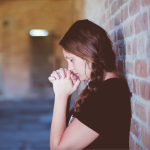


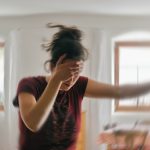






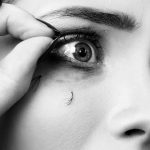



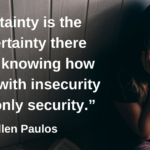

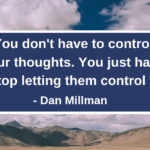

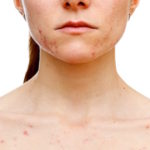

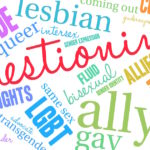


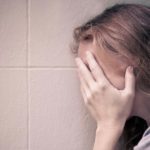

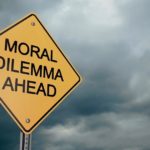
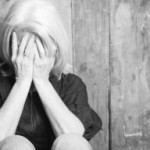
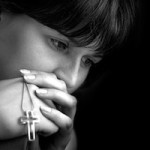







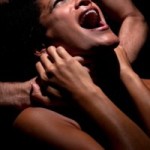











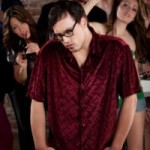







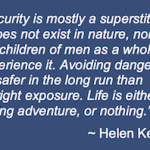
10 Comments
I think I may be suffering from a related OCD, Olfactory Reference Syndrome. But I’m not sure how to pursue treatment. I practice good hygiene, shower daily, wear clean clothes etc. However, I keep getting the fear that I may be smelling badly. Not just your usual B.O. which I get occasionally due to stress and whatnot, but a smell that people might be able to smell 20 feet away. I’d like to think I’m being paranoid, but every time I hear a cough, sneeze, sniffle, I get jumpy. It seems everywhere I go I am hearing coughs, sneezes, sniffles. At work I have been hearing them for the last two months. I understand people get sick from sharing the same work environment (even I have), but some people have been coughing for over a month. No one has mentioned a smell to me and I have heard no complaints about bad smells at work or in class, but I can’t help being paranoid. I am trying to just accept the uncertainty/discomfort and not practice avoidant behavior as well as not reassurance-seeking I have suffered from OCD in the past but I got over it through practicing accepting my thoughts and not reassurance-seeking. Is it possible for my obsession to move from one to another? To further complicate the issue, there are diseases that do cause strong body odor such as fish odor syndrome, and I fear I may have one of those conditions.
Hi Fred,
Thank you for your comments. While I cannot provide a diagnosis via an online forum, I can say that the symptoms you describe are consistent with those of Olfactory Reference Syndrome (ORS). You may want to take our free online ORS test.
The best treatment for ORS is Cognitive-Behavioral Therapy (CBT). This therapy has consistently been found by researchers to be the most effective treatment for most Obsessive Compulsive Spectrum Disorders and anxiety-based conditions. I suggest you go to http://www.adaa.org or http://www.ocfoundation.org. Both provide searchable databases of CBT therapists.
Hi, I am 14 years old, and I have social anxiety. Whenever I get stress out, excited, nervous, etc.I start smelling bad.Please help me, I am afraid to tell anyone, and I am tired of people covering their nose when I walk by. I like being active and social and helping people and just being with people, but I have started avoid situations like that, and started pushing people away..Please help me. Is there a type of deodorant for anxiety?
Hi Anonymous,
Thanks for commenting. There is no deodorant specifically designed for odor generated by anxiety. That said, I doubt your anxiety is causing you to smell badly. Your concerns about your odor may be related to a condition called Olfactory Reference Syndrome (ORS). It is quite common for people with this condition to also have Social Anxiety.
I think I have social anxiety infused with pure OCD. I had a thought “what if he thinks im gay” and then “what if I am gay” so then every guy I look at I tell myself dont keep eye contact with this person otherwise theyll think im gay or i might have gay thoughts. Then it ended up turning into I must keep eye contact otherwise theyll know there is something wrong! It came til a point that I kept too much eye contact then I turned away and it became real awkward and one person kept staring at me to see what is wrong. So now I’m afraid that somehow I look too much or too little and they’ll end up staring at me and i won’t be able to change their opinion on me and it’ll be my worst nightmare. Please help me, does this sound like both OCD and SAD mixed together?
Anonymous,
The line between various anxiety disorders such as OCD and Social Anxiety can at times be vague. That said, the symptoms you describe appear to be entirely a function of your obsessions about sexual orientation. This sounds like a variation of OCD that is commonly called HOCD. I encourage you to read our five article on HOCD, starting at https://ocdla.com/sexual-orientation-hocd-gay-ocd-treatment-1969/.
I have pure O in the past but currently is manageable after i apply the Erp. but the main issue is my social anxiety disorder. It is mostly always on 9.5/10 scale in terms of anxiety. Is facing SAD the same as facing OCD in terms of therapy? Making scripts while exposing and avoiding rituals and accepting the worst fears imagined? I know most experts on SAD recommend cbt but i originally always have OCD so i know cbt alone is useless for my SAD. Thank you and hopefully you can reply to this.
Anonymous,
Three things…
1) You say CBT alone for Social Anxiety would be “useless”. That is not accurate. Research has consistently found that the most effective treatment for Social Anxiety is CBT.
2) ERP is not separate from CBT – it is a specific type of CBT.
3) I encourage you to seek treatment with a therapist who specializes in CBT for OCD and Social Anxiety.
whenever someone says something mean to me, joking/friendly or not, i think about violence on myself (slashing at my throat, blowing my brains out and the blood pours out, ect) i cant stop. i had a dream my dad was yelling at me and i shot myself. is this ocd or am i just being weird?
Hi Todd,
There is no way for me to ascertain whether you have OCD on the basis of a brief blog comment. That said, it is concerning that your response to people saying mean things to you is to have thoughts about violently killing yourself. I encourage you to seek the help of a therapist to help you find a more psychologically healthy way of responding to mean comments.